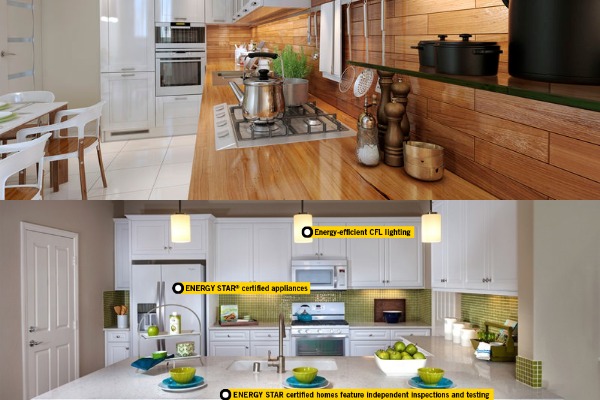There are certain appliances for kitchen cabinets that we cannot really live without. We certainly need our fridge, our stove – even our dishwasher. However, we can’t ignore the fact that 20% of our home bills come from our kitchen appliances. So, in order to save energy, you need to choose the appliances that would take the least amount of energy. Here are our tips for you.

Go for Energy Star Labels
The Energy Star is a government-approved label that is placed upon appliances that take the least amount of energy. Not only do Energy Star approved products help you save money, but they are also efficient in protecting the environment. These products have the purpose of reducing greenhouse gas emissions, and they use 10%-50% less energy as compared to other products that do not feature this label.
Go for Combo-Appliances
The fewer appliances you have in the kitchen, the less energy you will use. This is why you need to focus on those that have 2-in-1 options. For instance, rather than buying a separate stove and a separate oven, look for one that has both in the same combo. The same goes for refrigerators. Instead of buying a separate freezer and fridge, go for a unit that has both of them. Pop an Energy Star label in the mix as well, and you’ll see that over time, you will pay less on your energy bills.
Also Read: 6 Awesome Mini Kitchenette for Small Kitchen
Scrutinize the Design
The designs of certain products were made to consume less energy. For instance, you probably thought that regardless of the position of the freezer, a fridge-and-freezer combo appliance will consume the same amount of energy, right? That’s where you are wrong. In truth, if you purchase a refrigerator that has a freezer placed on top, it will consume 10%-25% less energy in comparison to a refrigerator that has the refrigerator placed at the bottom.
Don’t Go for the Cheapest Products
Kitchen appliances can be very expensive, so you might want to go for the cheapest products to save some money. However, lower pieces likely do not have the Energy Star label and will consume more in the future. You’ll be paying less now to pay more later on. Plus, the cheaper the product, the more likely it is to get damaged and require repairs over time. Obviously, that will cost a lot of money – as well as a lot of energy on your part. Invest in an average-priced product that has all the good features.
Go for Induction Cooktops
Today, technology is in a good place, and fortunately for us, we have induction cooktops. Induction cooktops represent a more energy-efficient way to cook our food, as they consume less in comparison to a classic stove. Plus, not only will they reduce the risk of carbon monoxide poisoning, but they can also diminish the heat delivered into the room. This will keep the kitchen cooler – something we all want, particularly in those hot summer months.
Get a Microwave
When you turn on the stove or oven just to heat a meal or prepare a small quantity of food, you waste quite a lot of energy. This is why you might want to get your hands on a microwave. It can significantly reduce your energy consumption – up to 80%, according to Energy Star. Plus, it is great to have around when you want to quickly heat some leftovers.
Avoid Excess Features
Sure, that freezer might look super cool with that water dispenser and that ice maker. But do you actually need those features? How often will you use them? You can simply stick a water bottle in the fridge and some trays in the freezer – and voila! You have everything you will need from a refrigerator. The more features it has, the more it will consume – so, make sure that you choose smartly.
Final Thoughts
When you have a lot of appliances in your home, you don’t have to stop using a unit altogether. You can just opt for an energy-saving product instead. First of all, make sure to look for an Energy Star item, and then work your way to a good product from there. Click here to learn more about kitchen tips and tricks.